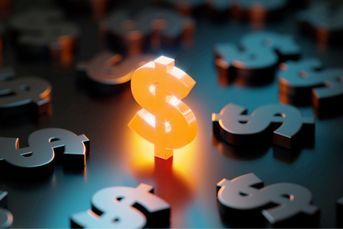Robinhood announces checking and savings with 3 percent interest rate
 Baiju Bhatt Photographer: David Paul Morris/Bloomberg
Baiju Bhatt Photographer: David Paul Morris/Bloomberg
The service includes a debit card with access to more than 75,000 ATMs and no fee.
Robinhood Financial, one of the most valuable private companies in the financial technology space, is rolling out its take on the traditional bank account starting on Thursday.
The new offering from the Menlo Park, California-based startup is called Robinhood Checking & Savings, and promises a 3% interest rate, a sky-high payout in today’s low-yield environment. Robinhood is pitching the service as akin to a checking or savings account, though there are some key differences in how the product was created — including how it’s insured.
(More: Robinhood launches self-built custody and clearing service)
“This has been the plan for the business very concretely for at least two years now,” said Baiju Bhatt, who co-founded the no-fee stock trading app in 2013 with Vlad Tenev. “The idea of reinventing checking and savings is something Vlad and I have been talking about since probably 2010.”
Robinhood’s new service will be available as an added feature for the startup’s roughly six million customers. The checking service also comes with a debit card that offers access to more than 75,000 ATMs without charging a fee. Neither the checking nor the savings products will have a minimum monthly balance.
Robinhood isn’t the only fintech company to take a shot at reinventing bank accounts or debit cards in recent years. Social Finance Inc., the startup run by former Twitter Inc. executive Anthony Noto, rolled out its version of a bank account earlier this year, offering a 2% interest rate and no fees on the account or ATM transactions. Marcus, the consumer arm of Goldman Sachs Group Inc., has also been increasing its interest rates, which now sit at just over 2%.
For the most part, these companies do not see this product as something that will significantly alter their business models in the near term — and in some cases they’re losing money on the offering.
Robinhood says it will be able to make money on the service by investing customers’ deposits into low-risk products like short-term Treasury bills, running a leaner business than most banks and collecting interchange fees via Mastercard on debit-card transactions. But even though the investments are conservative, the product won’t have all the protections of a typical checking or savings account. Robinhood Checking & Savings will not be insured by the Federal Deposit Insurance Corp. Instead, because the product will be offered by the broker-dealer arm of the company, it will be insured by the Securities Investor Protection Corp., which covers brokerage accounts.
(More: Cheap is great; free will usually cost you)
SIPC insurance does not guarantee depositors get all their money back in every circumstance — something the FDIC can promise because it’s backed by the U.S. government. It will cover $250,000 in losses if Robinhood the company fails financially. Asked about how an economic downturn could impact its checking and savings products, Robinhood wrote in an email: “Customers would get an email notification that clearly states the 3% interest rate is changing.”
In order to make its high-interest offering pay, Robinhood is hoping to reach a critical mass of users making deposits and using the debit card to generate interchange fees. “As a broker dealer we will be investing customer’s capital into very low-risk assets so we will be collecting interest on customer cash,” Mr. Bhatt said. While some of that revenue will be passed back to customers in the three% interest rate, he said he expects to make enough off of the deposits in the future that it will be a lucrative business. “We believe in three to five years, this is a business that will generate significant revenue for us.”
But beyond the assumed returns on the product, a Robinhood spokesman pointed out that the company is also making another bet: that checking and savings-type services will generate goodwill from customers, particularly if the economy takes a turn. Right now, some users may think of Robinhood as a vehicle for day-trading and crypto investing. If stocks get more volatile, lower risk products will look a lot more appealing.
Learn more about reprints and licensing for this article.








